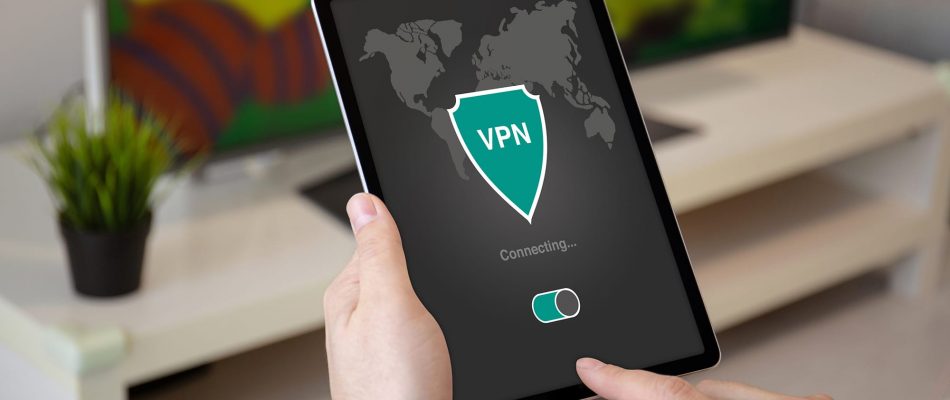With increasing data collection across the internet, privacy is more important than ever.
Whether you visit a website, use an online service or any social media platform, your Internet Service Provider (ISP) and the services you use can track your activity. This is where a Virtual Private Network (VPN) can help you protect your privacy.
For a typical user or even for those working in official capacity, VPNs are a good way to protect your privacy online. Apart from their security benefits, they can also be used to access information in places where said information is restricted or banned.
For example, if you are travelling in Europe and you want to watch Amazon Prime or Netflix content that is restricted to the US, you can access it by using a VPN. Moreover, if you are in China, you may use a VPN to access your Gmail since it is banned in China.
Let’s discuss how you can set up a VPN in Windows 10, Mac OS and Chrome OS.
But first…
What Is a Virtual Private Network (VPN)?
A Virtual Private Network (VPN) is a way to establish an encrypted network connection when using public networks. It creates a safe, virtual tunnel that is encrypted to protect your online activity and disguise your online identity, or IP address.
The real-time encryption of a VPN makes it extremely difficult for third parties like hackers, businesses, government agencies, etc. to track your online activity or steal your data.
Although it is important to note that using a VPN does not hide your activity from your VPN provider and authorities can access this information from the provider if needed.
That being said, because your VPN provider has access, it is always best to choose a trusted VPN service and preferably not a free one. This is because free VPNs tend to monetize by collecting and selling your data to the highest bidder.
How to Set Up a VPN in Microsoft Windows 10
You can set up a VPN connection in Windows 10 by following these 6 steps.
- Click on the Windows button and go to Settings > Network & Internet > VPN and click the button that says ‘Add a VPN connection’
- This will open a form for you to fill out. For ‘VPN provider’, select Windows (built-in). Add a name for your VPN in the ‘Connection name’ box, add the ‘Server name or address’, add ‘VPN type’ and add ‘Type of sign-in info’
- On the same form you can add a ‘Username’ and ‘Password’ but these are optional for extra security. You can then tick the box underneath if you wish for the computer to remember your sign-in information, and finally, click the ‘Save’ button.
- In order to connect to your VPN, once again go to Settings > Network & Internet > VPN and this time click on your entered ‘VPN name’.
- Now, you can select ‘Advanced Options’ to edit any connection properties, if you want.
- Simply select ‘Connect’ and if you initially set up a password, you will need to enter it.
That’s it. You have now successfully set up and connected your VPN in Windows 10.
How to Set up a VPN in Mac OS
There are applications available that help to automatically set up a VPN but for the purposes of this guide, we will tell you how to set it up manually.
- To start setting up a VPN, go to ‘System Preferences’ and then ‘Network’.
- On the bottom left corner, click the plus (+) symbol and then select ‘VPN’ in the ‘Interface’ drop-down menu. Proceed to fill out the ‘Service Name’ and ‘VPN Type’ according to the VPN service you are using.
- Next, click the ‘Create’ button and you can now proceed to fill the details of your server address, remote ID and local ID, in their respective fields.
- Click on ‘Authentication Settings’, enter the username and password and click ‘OK’ and ‘Connect’.
You have now manually set up a VPN in Mac OS and successfully connected to it.
How to Set up a VPN in Chrome OS
In Chrome OS, you can typically find the extension, or app, of your VPN service on the Google Play Store and once you have downloaded it, you will be guided on the setup automatically. If, however, you want to manually set it up, you can only do so for L2TP and OpenVPN.
Here’s how:
- On the bottom right corner of the screen, click on the time.
- Select ‘Settings’.
- Find the “Network” section and click on ‘Add connection’ and then select ‘Add’ next to OpenVPN/L2TP.
- Fill out the necessary details like server hostname, service name, provider type, etc. and click ‘Connect’. Please note, that if you are using a Chromebook issued by your workplace, you may need to get the necessary details from your administrator.
Congratulations, you have manually set up a VPN in Chrome OS.
Conclusion
Setting up a Virtual Private Network is an excellent way to securely encrypt information and protect your activity. We highly recommend you use a trusted VPN service to take full advantage and protect your privacy by adding an extra layer of security.
Once you have set it up, you may notice a decrease in your browsing, loading and downloading speeds. This is because using a VPN slows down your online activity because of the extra layer of security. Multiple users on a single VPN or stronger encryptions tend to further slow speeds down.
This is a small price to pay for the added security benefits of a VPN. However, if you need the speed for downloading heavy files or anything else, you can always switch your VPN off.
If you want to learn more about how to set up a VPN or want professional help in setting up and utilizing a VPN for your business, please Contact Us Today!

